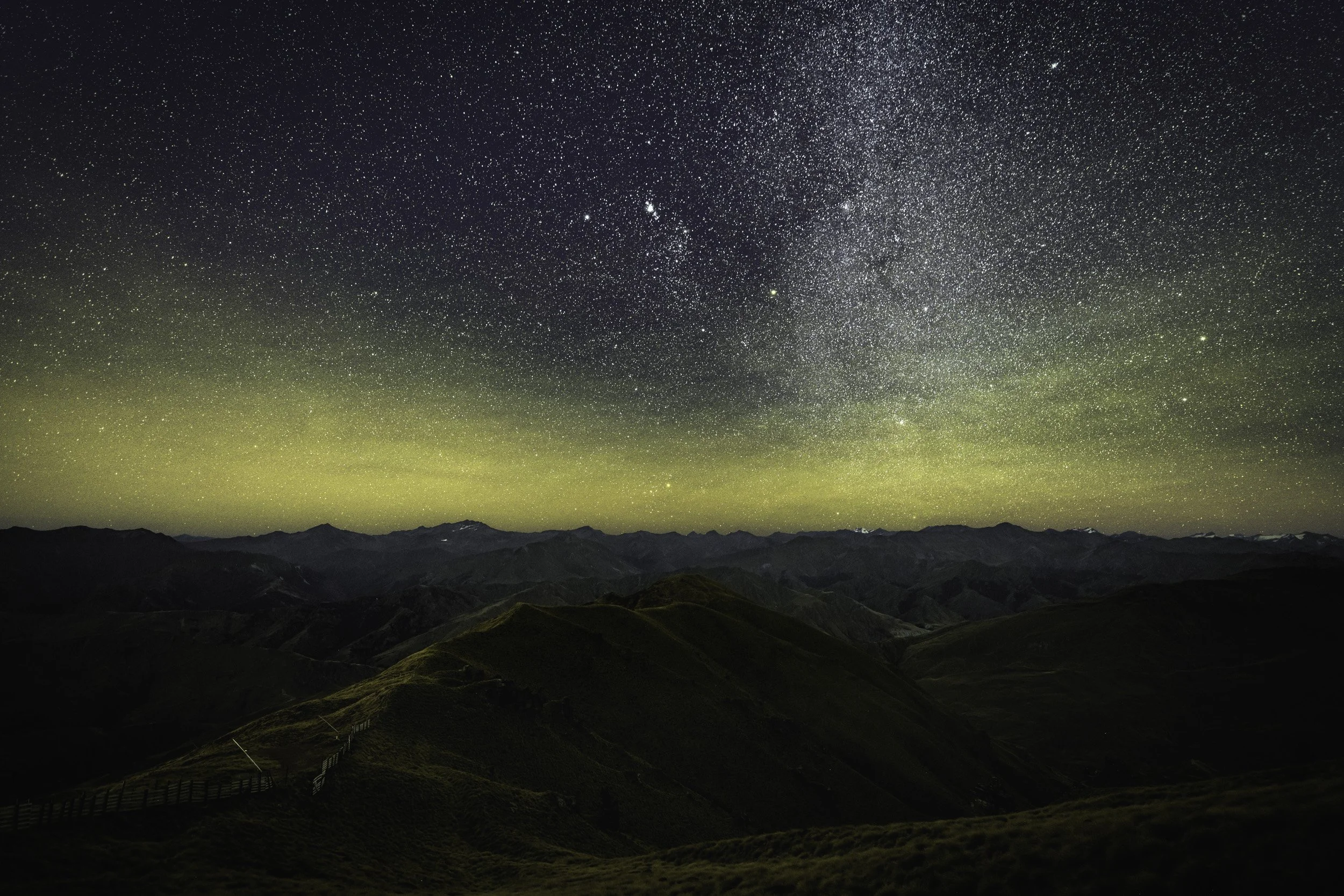Orion Setting to the West
As summer slides to the side, allowing Autumn to take front of stage, environmental changes are prominent and occurring pretty quickly. Temperatures are dropping and the nights are getting longer, without a doubt this will only improve conditions to view the beautiful Southern Night Sky over the Wakatipu Basin.
Orion is the constellation I know of from growing up in Wales. Incredibly easy to find, and in my opinion one of the few constellations that really looks like what his name suggests. There have been a few stories fairly recently about Betelgeuse, its magnitude was observed to drop by 2/3rds (it got dimmer), and various astronomers and scientists appear to agree the fade was due to a gas cloud being emitted from the Red Supergiant star.
Obviously it’s not that simple, but the tabloid press decided to run with the story that Betelgeuse will end its life in a dramatic supernova, which along with the stars amazing name grabbed the attention of many. This, the tenth brightest star in our heavens, will indeed end its life as a Supernova, but that is going to occur at some point in the next 100,000 years, so chances are you won’t see this on one of our Starry Night tours.
When it does happen it’s going to be show stopping amazing. Due to the star's close proximity to us, only 548 light years away, it will be able to be seen during daylight for a couple of weeks.
Let’s not digress too far. I decided to take myself off for an exploration of Greengates a few nights ago. A fairly easy place to get yourself to at Coronet Peak here in Queenstown. The eBike turns the trip from an exercise goal into a fun way to spend a warm Autumn evening. The view over the Southern Alps from this vantage point is absolutely unreal, it’s one of those places that you can see for miles yet see very little that has been created or influenced by man.
There was a general feeling of haziness to the sky, and it has been that way for what feels like an age. These warm temperatures and almost total lack of rain seems to be throwing the worlds best party for dust. The way our eyes see the night sky is considerably different to how we see it with our naked eyes.
Our brain processes the light the eyes absorb in real time, the camera takes it’s time. It collects light over a much longer period of time and as such allows us to see much fainter details. This evening, the first thing that really becomes apparent is the air glow. It’s so prominent and almost all around the horizon.
Having nestled myself in amongst the tussocks, feeling much warmer than I expected I settled down to capture various exposures and fields of view. There’s always something new to learn as an astrophotographer. Having taken more of an interest in Astronomy over the last couple of years I’m starting to learn and bring tools and techniques from astronomy into astrophotography, such as stacking.
This process allows the camera to capture exposures that are short enough to render points like stars (remember, we’re on a spinning planet - when we take a really long exposure photograph at night, we see the stars trail as the move slowly above us), and then once we’ve shot a series of them, it stacks them altogether producing an image with more detail and less noise. However, just like my description of Betelgeuse, it’s really not that simple.
It takes longer to take photographs this way, and thankfully in such a beautiful place, and being refreshingly warm, it’s easy to sit back, look and learn. With hopefully enough data acquired, it’s time to head back down with another quick stop for a quick pano from a view point offering an almost 360 degree vista. These captures show that even though the air glow was dominant, there is still a slight auroral glow to the South.
You can also see how this extra atmospheric haze affects the light pollution. This is one of the reasons why our Starry Night tours are mobile. We want to have the ability to take you to some stunningly dark places, as well as ones which offer these iconic backdrops for your Astrophotography portraits.


